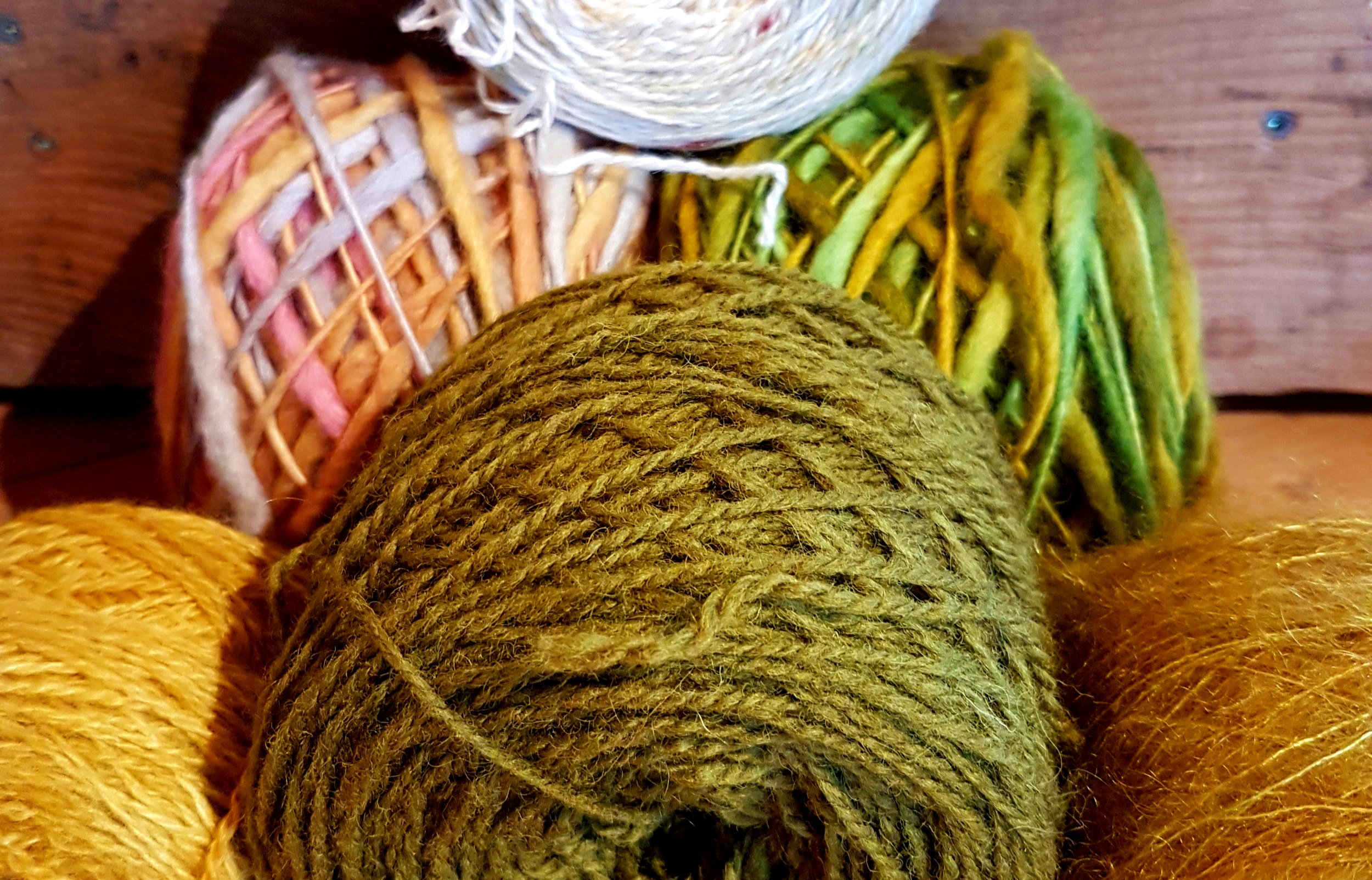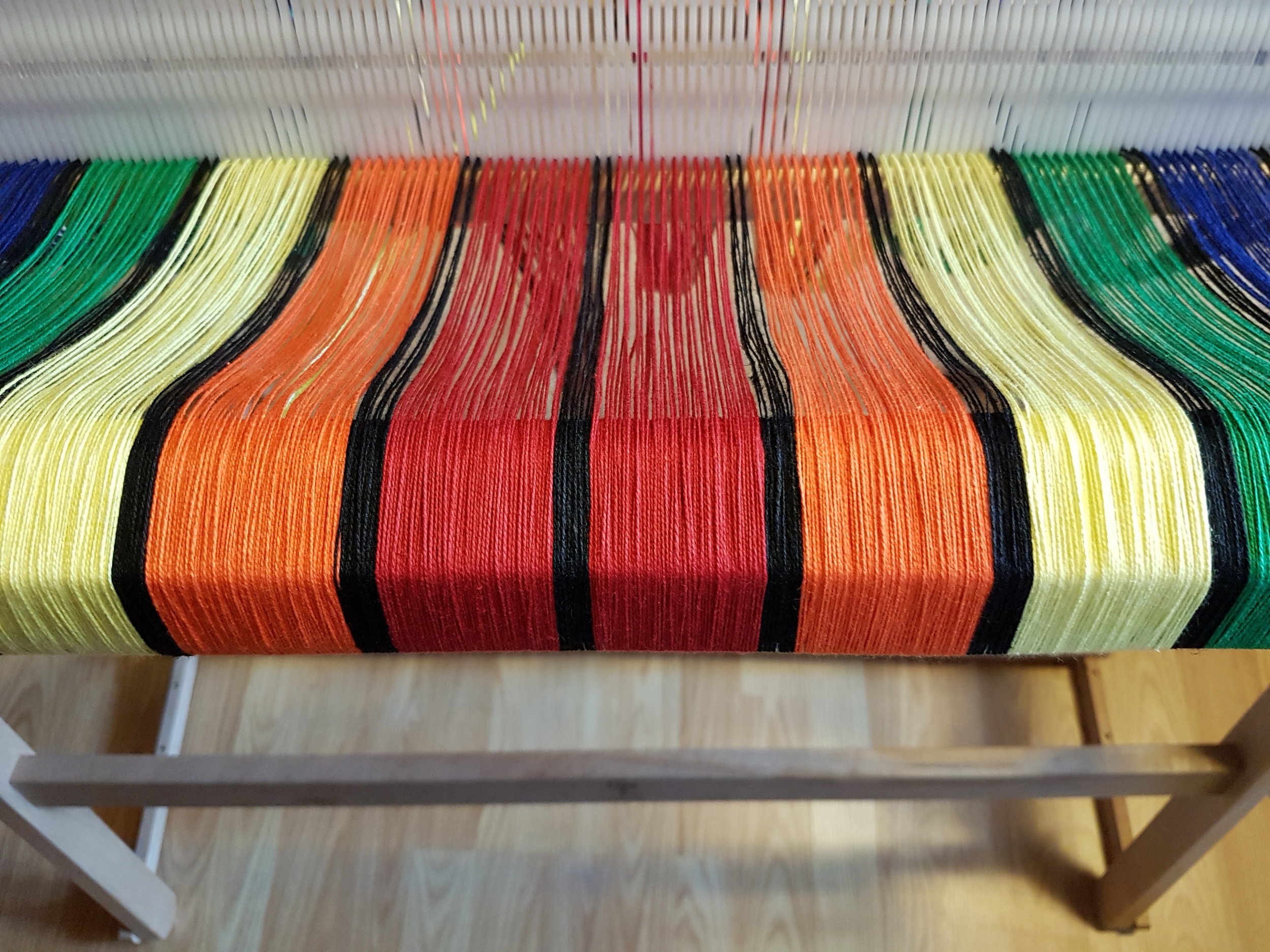What Yarn Should I Use?
Asking what yarn you should use is a bit like asking what you should eat. There are no right and wrong answers, it all depends on what you are trying to achieve. Even as I have started to write this, I’ve realized there are just too many answers for one blog. Today then, we will talk about what you want to make and I’ll give some of my favourites. This post will give you some guidelines to consider but will not pretend to know everything, or even very much!
A small sample I wove before making a shirt
What do you want to make? This is a key question. A light summer wrap will use very different fibres than something intended to withstand the winter winds! A floor rug needs to be tough and heavy (or be backed with something to stop it from slipping everywhere) but also easy to care for. Tea towels need to be absorbent and washable. Placemats need to be heavy enough to stay put. A shirt needs to have a nice drape but not be see though, but a sweat shirt or hoodie is ok with less drape.
This is where sampling can save you! Take the time to weave and finish a 12” piece. Measure it before and after finishing so you know what the shrinkage is. Handle it. If it’s going to be sewn try sewing a little bit of it. It’s better to know now that the sett needs to be higher or lower or that it feels awful than after you’ve woven 3 meters!
A summer shawl is meant to be light. Just enough to protect from a light breeze or maybe protect your shoulders from the sun. My summer shawl favourites are fingering or lace weights, silk, silk blends, linen, and tencel. Pairing the fingering warp with a lace weight weft is also lovely and a great way to let a special hand dyed warp really shine. Using a sticky yarn (mohair for example) allows you to use a wider sett creating a very airy fabric.
Waffle Weave
Alpaca or wool in a worsted weight make a fabulously warm and quick weave for winter. Using a thick and thin yarn adds a lovely texture without any extra work. Or a simple waffle weave gives a really cushy feel. Long repeats in warp and weft can give a plaid effect without you ever needing to change colour! Since alpaca is so warm, fingering weight is also a good choice for fall and winter. A woven blanket can also double as a cozy wrap.
Unmercerized cotton, cotolin and linen and hemp are great in the kitchen. Tea towels, dish clothes, placemats, or floor rugs. They are all washable and hard wearing…meant to be used! (do not use fabric softeners when washing towels, they will become less absorbent) On my rigid heddle I like to use my 10 dent reed and 2/8 cotton or cotolin doubled for tea towels. For placemats I use a 7.5 heddle and 4/8 cotton doubled. For a rug try warping with 4/8 cotton and using old sheets or t-shirts or jeans for the weft.
Bamboo and Tencel
Weaving for clothing a whole topic on it’s own. But as a general rule, think about drape and thickness. The fabric will be cut and sewn…always finish your fabric before cutting! Think about the thickness of seams. Everything I’ve woven has been much heavier than any store bought fabric. You’ll want to find patterns to suit your fabric and think about the best way to finish the seams with the least bulk. Investing in a walking foot and an overlock foot will make sewing much easier.










